Los Angeles Fires: 6 Months Later
Kathy’s Story: Rebuilding Life After the Eaton Fire, One Step at a Time
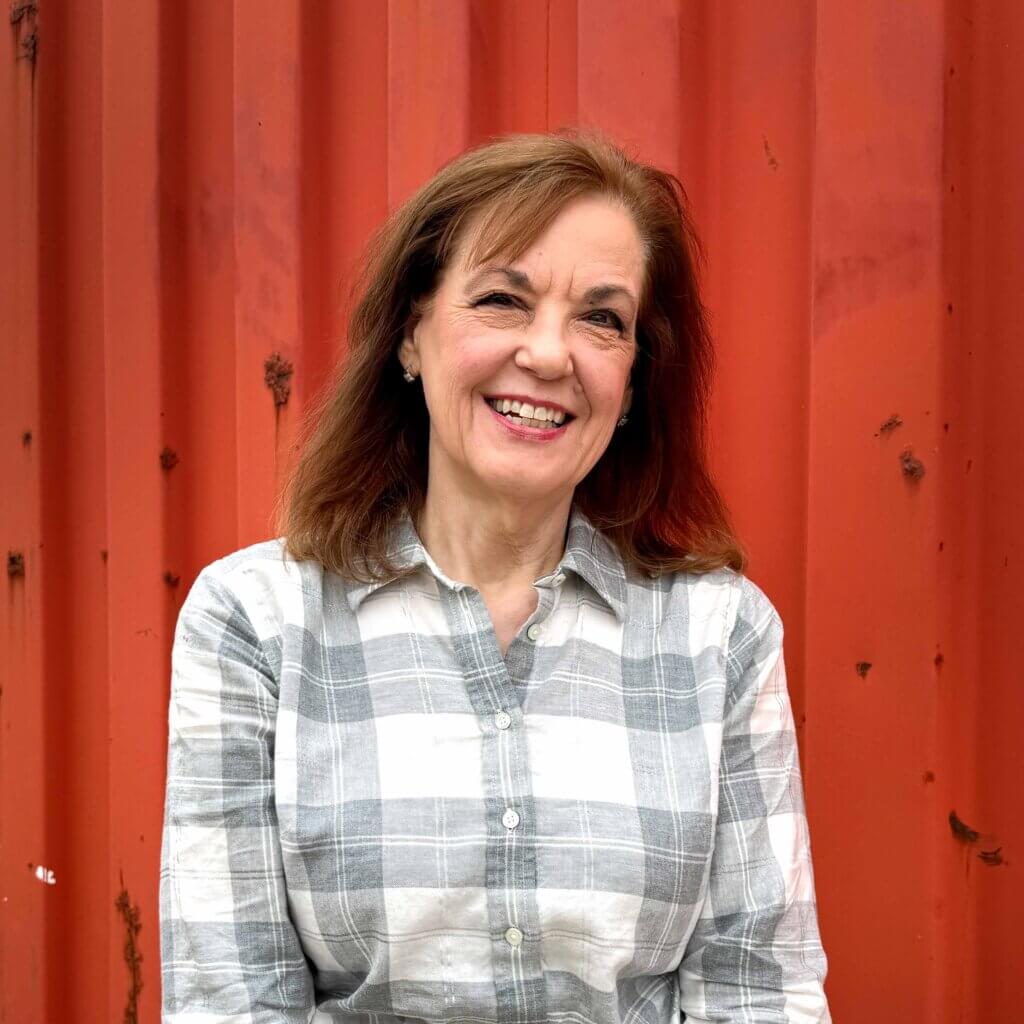
Kathy was running an errand with a friend when she learned that the Eaton Fire had reached her Altadena neighborhood. Brush fires were a familiar threat in the foothills, but with the winds picking up, she sensed this one was different. Kathy quickly went home, packed up a few essentials and decided to stay the night at her friend’s house, just to be safe.
But they weren’t there long. Around 4 or 5 a.m., they received orders to evacuate. Kathy left for Orange County to stay with family. With news of the flames spreading rapidly, she worried mostly about her son, a first responder who had been fending off the fire in Altadena for hours. When he called later that morning, he confirmed her next fear: the Eaton Fire had burned her home to the ground.

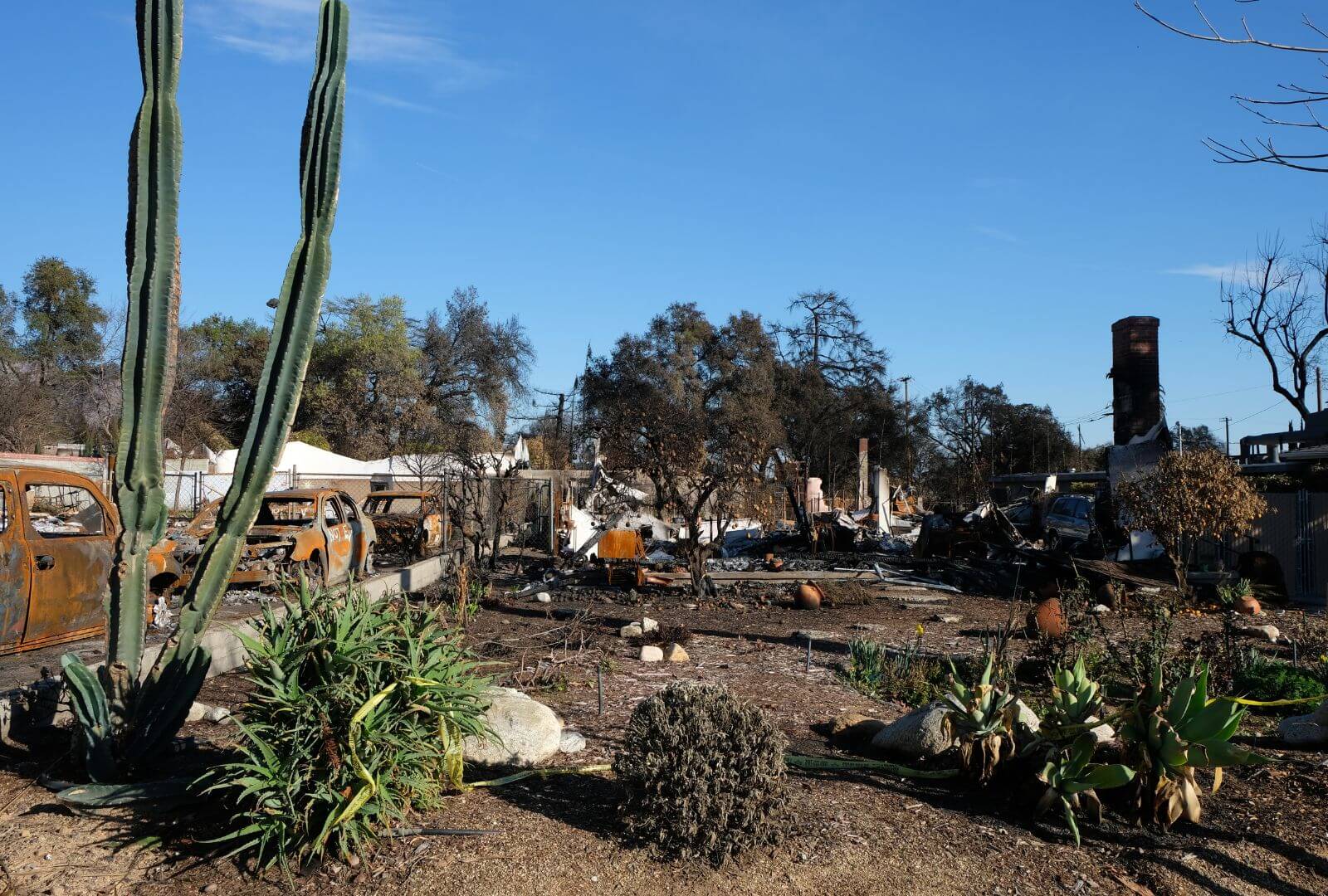
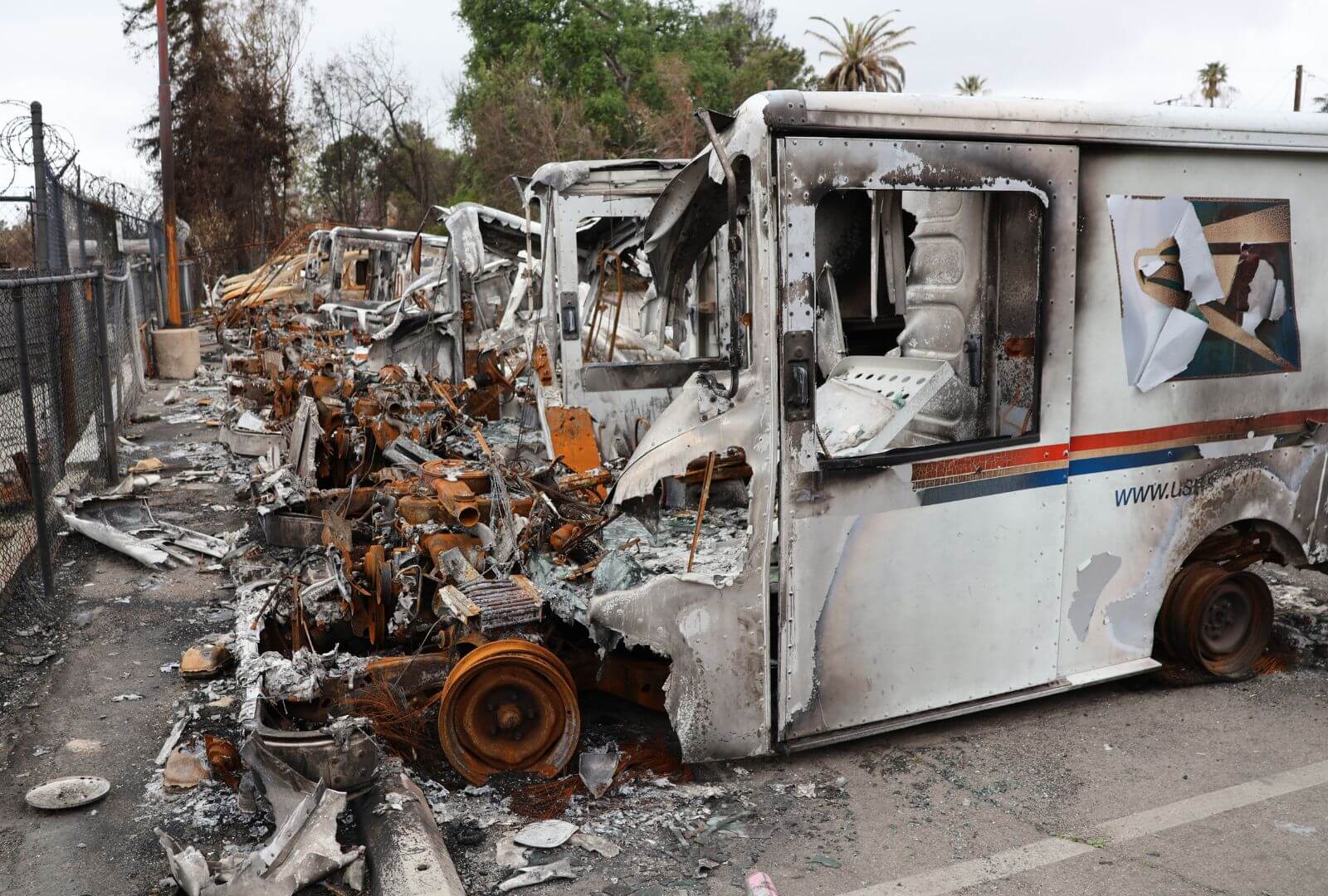
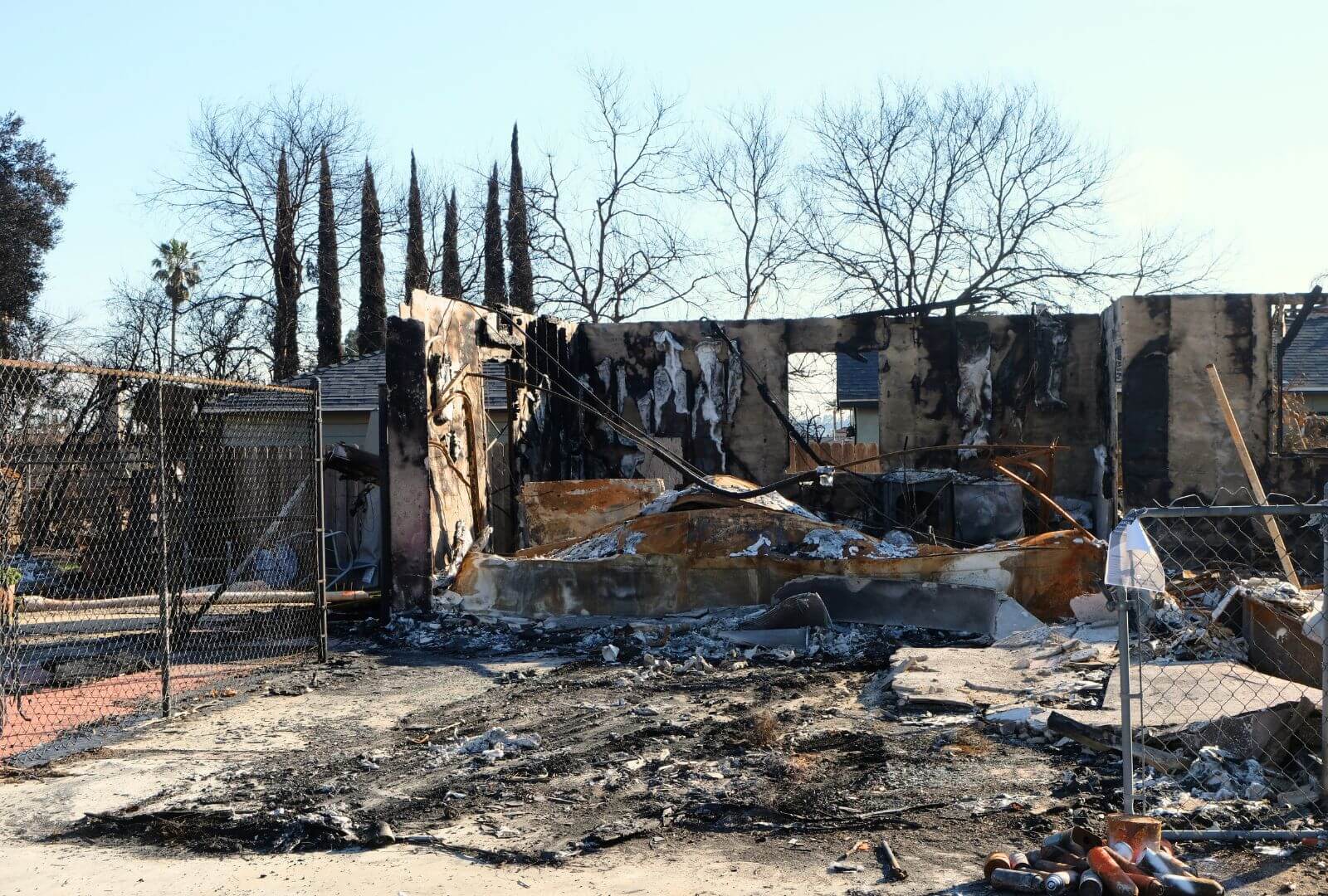
Kathy described the initial days after the fire as surreal and numbing. Despite numerous visits back to her neighborhood, accepting her new reality—the physical loss, as well as the impact on her life and family—proved to be a daily challenge.
“Every time you remember something, you grieve it,” she said. “People will say it’s just things, but the reality is there are things, but there are things that remind you of experiences and memories and people, loved ones.”
In the following weeks and months, Kathy leaned on her family, friends, and congregation to regain some routine and stability. She eventually moved to share a house with another friend, who sadly also lost her home to the fire. Albeit grateful for their unconditional generosity, Kathy longs for the place she used to call her own. “I don’t think that you can ever have that stability when you’re not in your home,” she reflected. “Being displaced, regardless of where you are, is still not home.”
RELATED | Alphonso, another Eaton Fire survivor, is on a similar journey. Read his story >>
In the wake of the fire, Kathy found herself overwhelmed. Not just by the loss, but by the maze of decisions and paperwork that followed. When she first visited the Wildfire Resource Hub in January, where federal, state, and local community-based organizations came together to share comprehensive resources, she was met with long lines and a flood of information. From insurance, FEMA, housing, food, and medical needs, it was difficult to know where to begin.
Amid the crowd, Kathy connected with Hanna, a CORE volunteer who explained CORE’s cash assistance program. This flexible support helped her cover her auto insurance—one of those monthly expenses that doesn’t pause for disaster. Her local bank burned in the fires, and quick access to funds was critical.
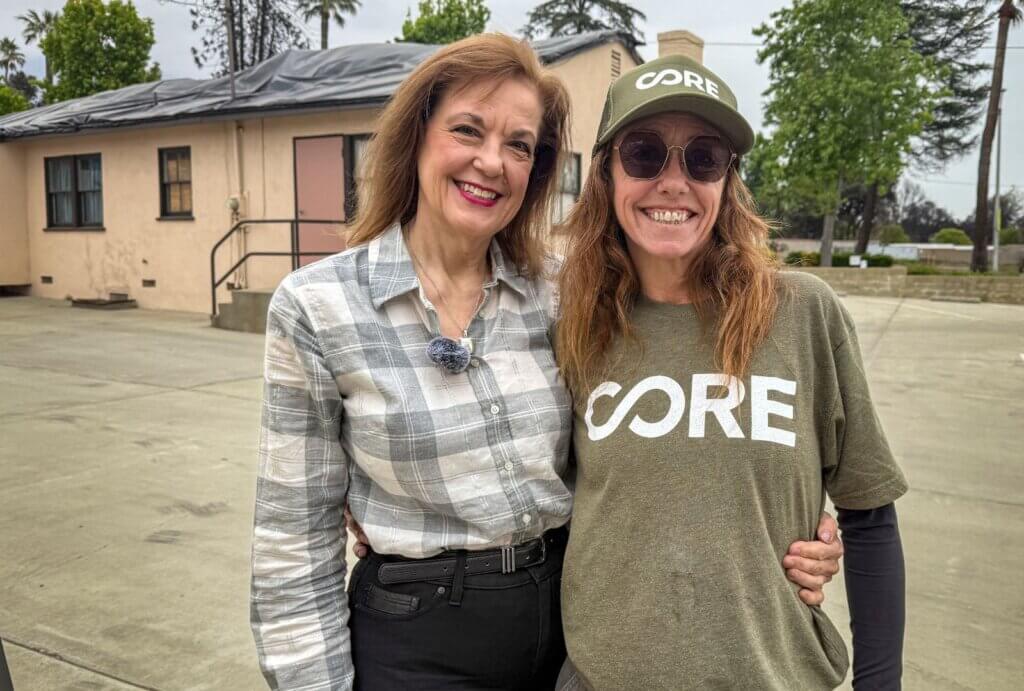
Kathy continued seeking support from Hanna and CORE. Even months later, she describes moments of “battle fatigue” — a sense of being worn out from the constant organizing and barrage of paperwork. For example, the fire debris from Kathy’s home was fortunately cleared early, but she feels like she’s still trying to catch up with everything else. What are the next steps to rebuild her home? Which company has the best rates? Does insurance cover any of these costs?
As a Resource Navigator, Hanna was there to lead Kathy in the right direction, helping fill out applications or informing her of deadlines. In some of Kathy’s most vulnerable moments, she was a shoulder to lean on. After all, recovery isn’t something anyone should face alone; it requires coordination and a community that shows up for one another when they need it most.
Since their first meeting, Kathy has considered Hanna a true friend and advocate. “Hanna is someone who has both the skills to procure resources and the ability to see through and bottom line what is needed…and at the same time, she’s gifted in terms of her empathy and being able to connect with people, which I loved. We could talk about many different things: something sad, some things joyous and happy,” Kathy said.
RELATED | Learn about the importance of resource navigation and case management after disasters >>
Kathy has lived in Altadena for 36 years, and the heartbreak she feels over the loss is profound. These days, she looks forward to reuniting with her neighbors, the routines of everyday life, and the special community traditions—like summer concerts in the park—that made Altadena home. And, although a bittersweet reminder of what was lost, each truckful of debris she watches leave the community feels like one step closer to this new reality.
With 15 years of emergency response experience, CORE understands what it takes for a community to truly heal and rebuild—and that recovery is not a linear process. Programs such as resource navigation go the extra mile, ensuring that survivors like Kathy feel supported as they navigate what’s ahead.
Through our 5-Year Community Recovery Plan, CORE is working together with trusted partners and local leaders to restore a sense of stability in the most affected neighborhoods. These fires have changed our community forever, and we’re committed to providing comprehensive support as Angelenos recover and rebuild in the coming years.